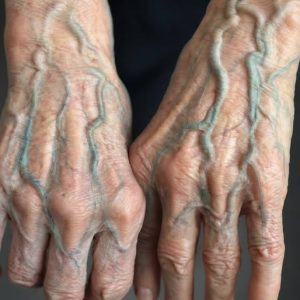You often don’t need to worry when veins on your hands or legs become more visible—many times it’s simply a normal, harmless change. Veins carry blood back to your heart and lie closer to the skin than arteries. Factors like thin or light skin, lower body fat, aging (which thins the skin), exercise (which increases blood flow), heat (which dilates veins), or genetics all increase vein visibility.
That said, visible veins can signal a medical issue in certain situations. Conditions like Chronic Venous Insufficiency (CVI) or Varicose Veins occur when vein valves weaken and blood pools—leading to bulging, twisted, or heavy-feeling veins, especially in the legs. Other red-flags include sudden appearance of veins without a clear reason, pain, swelling, redness, skin changes, or a family history of vein disease.
If you notice your veins suddenly becoming very prominent and you experience symptoms like pain or swelling, it’s wise to see a doctor. Also, if you simply have visible veins and want to support your vein health: stay active, avoid long periods of sitting or standing, maintain a healthy weight, and consider compression stockings if advised by a healthcare provider.
In summary: more visible veins are most often normal and benign—especially when linked to understandable causes like age, fitness, or heat. But keep an eye on any sudden changes or accompanying symptoms, and consult a medical professional if you’re unsure.




